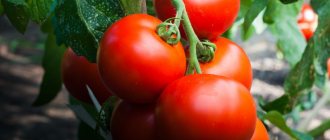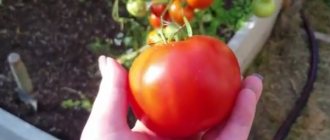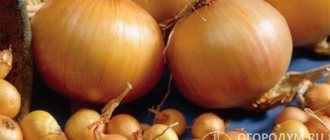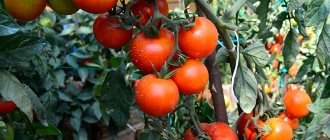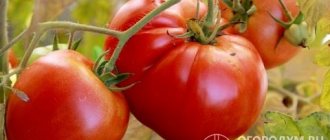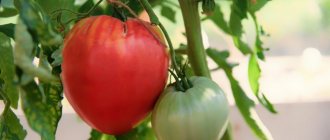Every gardener wants to find a tomato variety that is perfect for him and his plot. So that this variety combines the best qualities. Gardeners primarily look at yield level, taste, shelf life and whether the variety requires special care. Also, quite a lot of attention is paid to resistance to various pests and diseases. When looking for a suitable variety, gardeners do not search for long, because they do not believe that all the positive qualities can be found in one variety. But no, this is possible, this is the Bobcat f1 tomato.
Tomato Bobcat f1: description and characteristics of the variety
Tomato Bobcat: photo of variety
The Bobcat tomato variety belongs to the Determinate group. On average, the plant reaches about 90-110 centimeters in height. Tomatoes can be grown both outdoors and indoors. The Bobcat tomato is a late-ripening variety. That is, the first wave, when it will be possible to harvest tomatoes, will come in 130 days.
Note: If you are planning to grow the Bobcat tomato variety in the northern region, then due to its ripening period, this should only be done indoors.
- When fully ripe, the fruit of the Bobcat f1 tomato becomes a rich red color, shimmering a little orange in the sun. Also, there should be no green spot near the stem of the fruit.
- The shape of the fruit is slightly elongated, the shell is dense, but thin. Therefore, it is not felt when eating, and is also slightly ridged.
- The pulp of the Bobcat tomato is quite fleshy, with an excellent taste and aroma. When the fruit is cut open, you can see 5 chambers in which the seeds are located.
- With proper care, the harvest stabilizes and becomes regular from year to year.
Note: Since the shell of the fruit is dense, they are perfectly preserved as a whole, without bursting, like many varieties. It doesn’t even shrivel, as the skin makes it a heat-resistant variety.
Harvest and use
Ripe fruits from Bobcat tomato bushes are collected as they ripen, in this case the remaining tomatoes will ripen faster.
We must remember! The tomatoes on the bushes of this tomato ripen in batches, so the fruiting of the Bobcat lasts for several weeks.
The fruits are used to prepare various preparations for the winter, including whole-fruit canning. But they are also used for preparing vegetable salads.
Bobcat tomatoes: reviews from gardeners about the variety
Many reviews about Bobcat f1 tomatoes are positive, since the variety is highly resistant to many diseases. The yield level of Bobcat tomato is also high. With proper care, 1 square meter produces about 6-7 kilograms of fruit. And if you don’t bother too much with care, you get about 3-4 kilograms per square meter.
Also, gardeners growing the Bobcat tomato variety highlighted both the pros and cons of the variety:
Pros:
- The Bobcat tomato variety is resistant to short-term droughts and excess moisture in the soil. But it is recommended not to tempt fate and avoid droughts and waterlogging.
- High resistance to many diseases and viruses.
- Excellent taste and aroma of tomatoes.
- Even with a little care, the plant will still produce a good harvest.
- Bobcat F1 tomatoes can be used in different areas, that is, they are universal in use.
Minuses:
- Refers to late ripening varieties.
- When grown in the northern regions, the Bobcat f1 tomato variety cannot develop in open ground. Therefore, it is planted only in closed ground.
Tomato Bobcat f1: photo of variety
Similar hybrids
The Bobcat tomato is similar in characteristics and description to hybrids:
- Tomato Polbig F1. The species is almost a complete analogue of Bobcat F1. With the same characteristics of the bush, the only difference is the insufficiently large size of the fruit. Resistance to drought and disease at the same level.
- Tomato Polfast. This low-growing hybrid has an earlier fruit ripening period. The species is characterized by similar resistance to diseases of nightshade crops. With similar yield indicators, the tomatoes themselves are smaller, on average about 100-150 g.
- Nadezhda F1. The characteristics are very close to Bobcat, but the size of the fruit is smaller and does not exceed 250 g.
- President of F1. The attractive features of this hybrid are similar to the description of the Bobcat tomato. However, the plants have an indeterminate bush type and grow very tall, requiring additional care. Large tomatoes, up to 300 g.
- Tomato Khlynovsky. Mid-season hybrid of determinant type. Forms flat-round tomatoes weighing from 180 to 350 g. Productivity per square meter. m. can reach 12 kg.
How to plant Bobcat tomatoes
Bobcat tomatoes: photo of variety
Bobcat f1 tomatoes should be planted in early spring, in early March. Since this variety is a hybrid, the seeds are purchased in specialized stores. Purchased Bobcat tomato seeds have already been treated with the necessary means and are ready for planting. The gardener can only place the seeds in the ground and water them.
It is also recommended to buy soil in the store, as it will already be prepared, or prepare the soil yourself. This will take a little time. It is necessary to take the soil from the site and heat it in the oven. After this, treat it with a solution of potassium permanganate and dry it. Then it must be mixed with humus in equal quantities.
The prepared soil is placed in any containers. Furrows 15 millimeters deep are made and sowing is carried out. Bobcat F1 tomato seeds are laid out in grooves and covered with soil. After which you need to pour water by spraying. Then you need to insulate the soil using a plastic bag or film.
The containers are placed in a room where it is dark and warm, the air temperature is about +24 degrees. After 6-10 days, the first shoots will appear and the film must be removed. The sprouts are transplanted into separate containers and fertilizer with potassium is added to the soil. In the future, it will be very easy to care for the seedlings; they will need to be watered and well lit.
Due to the short spring day, Bobcat f1 tomato seedlings will need more light. For this purpose, special artificial lighting is used.
Note: Artificial lighting can be a regular LED or fluorescent lamp.
Tomato Bobcat: photo of variety
Hardening of seedlings
When the weather becomes warm in the spring, the seedlings need to start hardening off. By then she will have grown well. For hardening, it is necessary to place the seedlings in fresh air. To begin with, this is done in the evening for 1 hour. And then the time increases and after 5-6 days the seedlings can be exposed to the sun. This hardening usually lasts 10-11 days.
Transplanting Bobcat tomato seedlings
After the Bobcat tomato seedlings have grown stronger, they should be transplanted into open or closed ground. The transplant is carried out into holes, between which there should be about 60 centimeters. Planting should be staggered.
The distance between the bushes is a mandatory criterion, since if it is not met, the tomato yield drops by 2-3 times. The soil must be well prepared before transplanting. To prepare open ground you will need copper sulfate.
You need to prepare a solution from it. 10 grams of the substance per 5 liters of warm water, and pour it into the soil. Vitriol will disinfect the soil well. After which a small amount of a mixture of ash and humus is added to the soil.
Plant Formation
After the transplant, you need to think about the formation. Sometimes only the central stem is left, but then the harvest will be small. But the formation of two stems gives an excellent harvest.
What care does a Bobcat tomato require?
Bobcat tomatoes: photo of variety
The Bobcat tomato variety does not require any special care, but basic care should be provided.
- Due to the high yield level, a lot of fruits are produced on the bush. Therefore, he needs to install a support and tie it to it. Otherwise, the branches along with the fruits will break.
- Unnecessary stepsons should be removed, as they depress the bush.
- The Bobcat tomato variety responds well to watering, but it does not like excess moisture. Therefore, it is necessary to water 2 times every 7 days.
- The bush has fairly dense foliage, so it should be trimmed to facilitate the development of the variety.
- To retain moisture in the soil, you can sprinkle it with straw or hay.
- If the Bobcat is grown indoors, then regular ventilation is necessary.
If these basic care measures are followed, the plant will bear fruit and develop well.
Features of cultivation
Although this hybrid is quite unpretentious, its productivity directly depends on compliance with all the rules for caring for a tomato.
Tomato care
Further care for the tomato includes regular watering, loosening the root zone, removing weeds, fertilizing and protection from diseases and pests.
Water the Bobcat tomato bushes once every 3-4 days with warm, settled water, strictly at the root. In this case, you need to ensure that drops of moisture do not fall on the sheet plates. It is advisable to water the plants in the evening.
In order for the bushes of this tomato to develop actively and bear fruit well, during the period of flowering and active formation of ovaries, a complex mineral fertilizer, which contains potassium, magnesium, boron and iodine, is added to the soil.
So that the shoots do not break off under the weight. ripening fruits, they are tied to strong supports.
In order for the ovaries to form more actively, it is necessary to regularly cut off the emerging stepsons. And when the fruits begin to ripen, it is recommended to gradually tear off the foliage on the shoots, starting from the base of the bush. Usually, several leaves are removed every 3-4 days.
Protection from pests and diseases
Although the Bobcat tomato is resistant to most diseases, one or two treatments of this plant with fungicidal preparations per season are necessary to prevent the risk of pathogenic microorganisms appearing on the vegetative mass.
You should also follow the basic rules for caring for this vegetable crop in order to prevent the appearance of pathogenic microorganisms on the vegetative mass of the bushes: maintain an irrigation regime, timely fertilize, loosen the soil in the root zone and regularly remove weeds.
Of all the harmful insects, the whitefly can cause the most damage to Bobcat tomato bushes. To deal with this pest, you should spray Bobcat tomato bushes with Confidorm solution. To prepare the working liquid, 1 ml of the drug is diluted in a bucket of water and the plants are treated.
The nuances of growing plants
Bobcat tomato fruits are not prone to cracking, but these plants need to be watered moderately so that moisture does not accumulate in the soil.
When growing this tomato in greenhouse conditions, after each watering it is necessary to ventilate it so that the humidity in the greenhouse does not increase.
To ensure that moisture from the soil evaporates more slowly, the root zone of tomato bushes is covered with a layer of straw or foliage.
How to increase the yield of Bobcat tomatoes?
When studying Bobcat tomatoes, many vegetable growers noticed that even with minimal care, large harvests can be harvested. There are some secrets to increasing yield that really work.
- Since the Bobcat tomato loves moisture, it can be preserved with hay or straw. Even with abundant watering, the plant does not become infected with fungi and cracks do not appear on the fruits. It becomes quite difficult to retain moisture in the soil on hot summer days. Then it is necessary to carry out treatment with Quadris or Ridomil Gold.
- This variety develops well without any fertilizers, but if complex fertilizing is applied, the yield will increase.
If you take good care of your crop, it will thank you with a wonderful harvest.
Bobcat tomatoes: photo of variety
Best reviews from our readers
Tatyana, 50 years old, Ryazan: I have been planting this tomato variety in my greenhouse for several seasons. Although the variety ripens quite late - by the end of August, its fruits are distinguished by their versatility. Therefore, I not only add them to vegetable salads, but also make various preparations for the winter. My family especially likes ketchup made from these tomatoes.
Valery, 44 years old, Chapaevsk: in our garden, my wife and I plant tomatoes with different periods of fruit ripening. As a result, we eat fresh tomatoes from the bushes almost all summer. But my wife makes preparations for the winter from the collected Bobcat tomato fruits. His tomatoes do not crack during heat treatment, so most of all my wife wraps these fruits whole. The only drawback of the variety, in my opinion, is that you cannot collect your own seeds from this hybrid, and you have to buy them in the store every year.
Elena, 40 years old, Tambov region: in my greenhouse I grew different varieties of tomatoes of Dutch selection. I also planted the Bobcat hybrid, but I can say that I didn’t like its tomatoes in summer salads. True, my family liked the pickled fruits of this tomato, and the lecho also turned out delicious. Therefore, over the next few years I planted bushes of this variety exclusively for preservation.
The Bobcat tomato, like all other Dutch hybrid tomatoes, is characterized by good yield, even size and good taste of ripe fruits, and resistance to most diseases. Therefore, those Russian vegetable growers who have already planted this tomato in their beds leave positive reviews about it on the forum.
Diseases and the fight against them
The Bobcat tomato is highly resistant to many diseases and pests. It is even called an invulnerable variety. Despite this, preventative measures should be taken as they will protect the plant. Neglecting preventive measures will increase the risk of infection by 3 times.
Prevention for Bobcat tomatoes is the usual proper watering, loosening the soil, providing good lighting and applying fertilizer.
The most dangerous pest for the Bobcat f1 tomato is the whitefly. To eliminate it, you need to carry out the usual treatment with Confidor. A solution is prepared from this drug, 2 milliliters of the substance per 20 liters of warm water.
